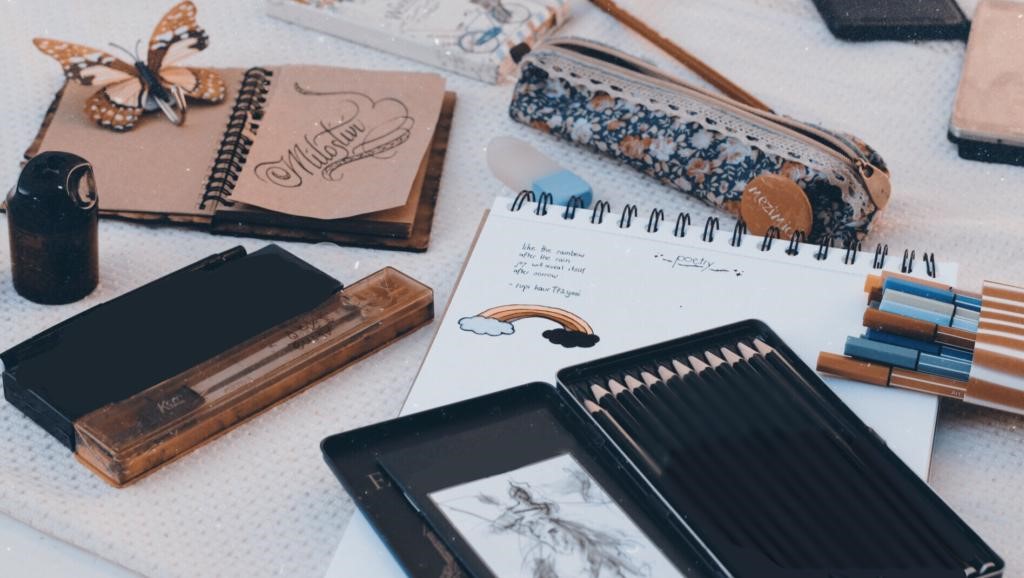![]()

What is art? You’ve probably seen art every day and everywhere. Is it a form? Or an expression? Art has always been a part of human civilization, shaping culture and inspiring emotions. The perception of being an artist varies among people. To some people, it’s their hobby. Their passion. Probably something that they look forward to doing and making every day. Some of them even make art as their own career.
According to Wikipedia, Art describes a diverse range of cultural activities cantered around works utilizing creative or imaginative talents, which are expected to evoke a worthwhile experience, generally through an expression of emotional power, conceptual ideas, technical proficiency, and/or beauty.
Now you might be asking yourself,
“Why should I care about artists? All they do is get paid to scribble on a piece of paper!”
In today’s world, the tendency to become an artist is shifting even more. More people are stepping into the creative field, thanks to social media and digital platforms that allow artists to showcase their work to the world. Even though their career seems to be a bit too nonsensical, they have still made up a small percentage of the world.
In Indonesia, for example, more local artists are starting to gain recognition through platforms like Instagram and TikTok, creating digital illustrations, traditional paintings, and even comic strips. Malaysia, too, is experiencing a rise in young artists who want to explore new artistic expressions, whether in graphic design, animation, or contemporary art.
In South Korea, known for its thriving entertainment industry, has also seen an increase in digital and traditional artists, with webtoons and character design becoming highly lucrative fields. The accessibility of art education and online courses has encouraged more people to pursue art, either as a full-time profession or a side hustle.
There are also two sides of a coin of becoming an artist. Let me draw your attention to the following illustration.
Pros of being an artist
- Gain Income
As a student artist, you can generate income by selling your artwork online through platforms like Etsy, or your own website. It’s recommended to take commissions for custom pieces and to leverage social media to promote your work and attract interested clients. You could also try entering art contests, which can also increase your exposure and potential prizes.
You could try teaching art lessons, by offering them to your neighbourhood, or you could try making tutorials online and upload them on social media such as YouTube, TikTok, and much more. But still, you need to consider your work’s quality, you shouldn’t set a Rp 40,000 artwork to be sold at Rp 200,000.
- Become famous
Many artists became famous by seeking public exposure by participating in their local art competitions, volunteering for art organizations, and partnering or collaborating on projects with other artists. You also could try to be consistent, and participate in art exhibitions and fairs.
You could also try to be a famous online artist by utilizing media social platforms and creating a dedicated art portfolio website to showcase your best work. Engaging with your audience, such as responding to comments, interacting with other artists online, and participating in art challenges also could boost your popularity on the internet.
- Building a network
Network building is very important to the student artists since it helps them to meet each other, find work, share resources, and give feedback on the artwork.
You could build a network by actively attending art workshops and events, engaging with your school art community, and even collaborating with other artists. But still, you need to be genuine and supportive of other artists’ work and be willing to support them.
- Personal satisfaction
Unlike solely seeking other people’s validation, artists prioritize their satisfaction, finding satisfaction in the act of artistic expression itself.
Artists use personal satisfaction as a driving force to create artwork that aligns with their vision, emotions, and experiences, essentially finding fulfilment in the process of making art itself, rather than solely relying on external validation like fame or financial gain; this often leads to a deeper connection with their work and a greater sense of artistic integrity.
Cons of being an artist
As a student, I try to picture in mind what would be the challenges I will face if I were to be an artist. Well, at least there are several hindrances that I need to cope with.
- Losing focus on school
The artist can lose focus on school if they become too absorbed in their art, often due to feeling a disconnect between the creative freedom of their art and the school environment.
This can lead to daydreaming, neglecting assignments, and prioritizing their artistic pursuits over other subjects, which can pull them away from the education they were supposed to get. A student artist might lose focus in school due to a disconnection between their creative passion and the school environment. They feel uninspired by the classwork, mostly daydreaming about art projects, which can pull them away from the lesson.
- Studying as a second priority
Just like in “Losing focus on school”, the artist can lose focus on school if they become too absorbed in their art, making it not important to the said artist. As a consequence, they put studying as a second priority.
The artist wants to focus on drawing, something they love but also has to study for school so it doesn’t mess with his future. In this situation, it may look like the artist needs to sacrifice one for the other, but the thing is, you just need to find balance in both of the activities. The artist could try to combine art and studying, like doodling key points of a lesson, which could be used to reinforce memory. Using art as a reward is like a motivation trick. Schedule the time by setting dedicated time for both so they don’t overlap.
Even with these tricks, the artist needs to make sure they don’t sacrifice sleep or health while balancing both art and school, which can result in burnout, which can and will hurt them in the long run.
- Unable to manage time
Balancing art practice with academic studies can be challenging, leading to stress and potential neglect of schoolwork due to time constraints. The creative process of an artist often requires a long and flexible period of focused work, which can clash with their school schedule, making them overwhelmed over what they should do.
This could make the artist procrastinate, miss their probably very important assignments, and even make them neglect other subjects. Thankfully, they can avoid this by creating a dedicated art schedule, breaking down large projects, prioritizing academic tasks, and developing healthy habits.
- Losing time to spend with friends and “me time”
Being an artist as a student means dedicating significant hours to practice, losing time to spend with your loved ones and friends, and even your own free time! They would usually dedicate their time to practicing art, and researching art techniques, often overworking themself to reach peak perfection.
They keep juggling their time studying for school and their time doing art at the same time, making it look like they need to sacrifice their free time just to draw, even though they didn’t need to sacrifice anything.
The artist could fix their schedule by first, just setting a time limit on art. With this, you could schedule even more time to spend with your friends and to yourself. Second, accept art imperfections. Not everything needs to be perfect, you could burn out yourself trying to fix something small in your artwork. And third, take a break. Even though art looks like a very easy task, the artist still needs time to take a break so they don’t get burned out.
Securing a workable support system
Many artists didn’t have their parents’ support since they were a child, with them having to suppress their talent and passion for art, often being pushed to take a more practical career like a lawyer, doctor, etc.
The little to no support from the artists’ parents often stems from a fear of the instability of the world, some even seeing art as a hobby instead of a “real” career. Most parents are worried about their child’s ability to experience rejection or disappointment, fearing that their child won’t be able to provide for themselves.
The artist could show their parents the diverse career options available in the art field, such as graphic design, animation, etc. They could show their work, achievements they have earned, and their passion and commitment to art to pursue it professionally.
As a high school student artist myself, I have cons of being an artist at least once in my experience. I was not good with time back then. I started to prioritize drawing, and I forgot about spending time with my friends and my responsibility as a student. I’ve even stayed up late to practice my drawing skills!
Now the more that I look back, the more I realize that I could have done so much more without making myself burned out. In the long run of being an artist, I could have learned to schedule my time better. Just like in “Losing time to spend with friends and ‘me time’”, I could’ve set a limit on making art every day, accepted that my art doesn’t need to be perfect, and even took more breaks than just a 5-minute toilet break.
Despite the challenging obstacles the artist faces, choosing to be one is a deeply personal decision. Whether as a hobby, a profession, or a lifelong career, being an artist is a journey worth exploring—one where expression and inspiration know no limits. In the end, it doesn’t matter what job you choose, whether it’s being an artist, a doctor, or even a geologist. What’s important is that you have passion and commitment to the career you choose, and your parents’ and family’s support to carry out your dream to be an artist maximally.
